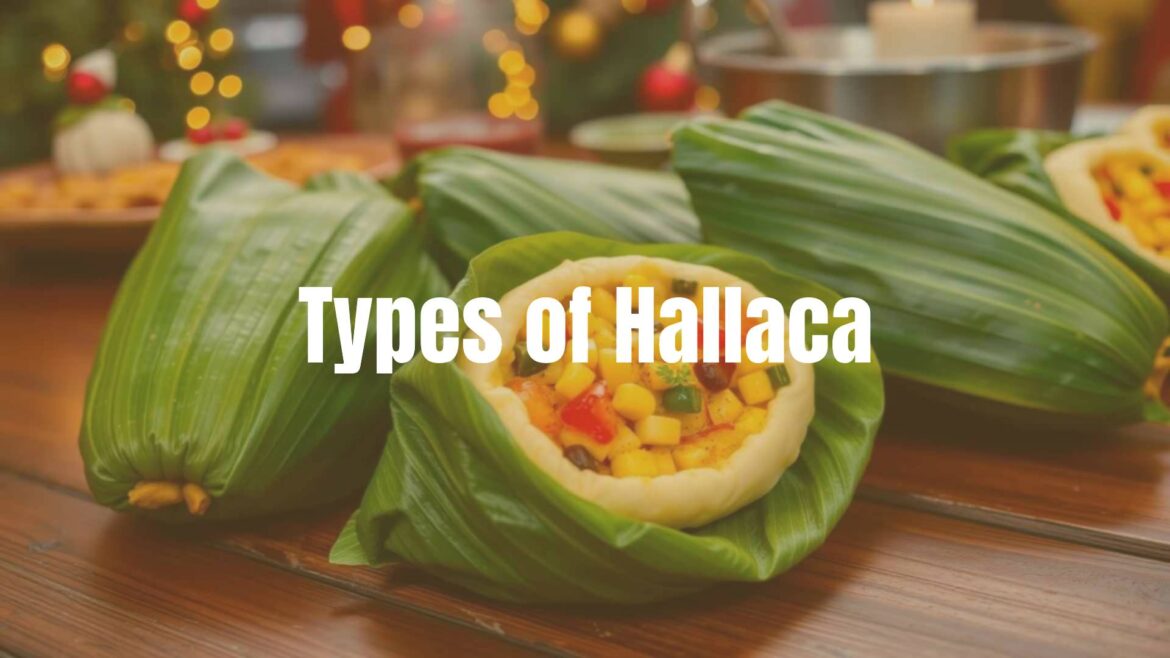The hallaca is a treasured Venezuelan dish, closely tied to Venezuelan culture and Christmas traditions. But “hallaca” does not refer to just one recipe. Instead, there are many kinds of hallaca across the country, each with its own style, shaped by local ingredients, family customs, and regional cooking methods.
The differences can start with the corn dough and continue through to the stew-like filling. Many families keep their own unique hallaca recipes, which leads to a wide variety of flavors and textures. These changes are not by chance-they show how Venezuelan cooks have used what’s around them, mixing native, Spanish, and African influences to create something special. Let’s take a closer look at the different types of hallaca and what makes each one unique.

Main Types of Hallaca
At its simplest, a hallaca is made by wrapping a seasoned corn dough around a flavorful stew, then folding it all up in plantain leaves and boiling it. While this basic method is almost always the same, many small details and changes set each version apart.
Hallaca recipes have developed over many years, growing and changing alongside Venezuelan society. Local foods and traditions have shaped each hallaca into more than just a meal-it’s a piece of history and family pride.
Regional Differences in Hallaca
Venezuela covers wide mountains, open plains, and tropical coasts. Each of these regions has its food customs, which you can taste in their hallacas. Many states, and sometimes even towns, have their own way of making hallaca. These styles reflect the foods available locally and how families have cooked for generations.
For example, people in the Andes might have different ingredients than those on the Caribbean coast. These differences affect both taste and style, so tasting hallacas from different areas is like traveling across Venezuela on a plate.
Ingredient and Filling Changes
Although all hallacas use corn dough and a stew filling, each type can have special twists. The dough, colored with annatto oil and mixed with broth, might be prepared slightly differently from place to place, changing its softness and golden color.
The filling, known as “guiso,” is where most of the variation happens. While beef, pork, or chicken are common, cooks also add ingredients like raisins, olives, and capers. Some hallacas even include bacon, onions, peppers, leeks, Worcestershire sauce, or brown sugar, creating either a more savory or slightly sweet flavor. The stew can be cooked for a long time or only briefly, depending on local habits. This means each guiso not only tastes different but might even look different based on the cooking time and ingredients chosen.

Popular Regional Hallaca Styles
Here is a breakdown of some of the most common hallaca types found around Venezuela:
| Region | Main Features |
|---|---|
| Andean Hallaca | The meat filling goes in mostly raw or just lightly cooked and finishes cooking as the hallaca boils. The result is a fresher taste, with each ingredient’s flavor standing out. The overall flavor is heartier, matching the traditions of the mountains. |
| Llanera Hallaca | This hallaca, from the plains, centers on beef and often has a stronger, smoky taste. The filling is often richer, using more lard and slow-cooked stew, and the dough is usually firmer to handle the heavier filling. |
| Oriental Hallaca | Made in the east of Venezuela, this version sometimes uses chicken or fish, giving it a lighter or slightly sweet taste. Local spices offer a unique flavor, and the filling might have a tangy or bright undertone. |
| Central Venezuelan Hallaca | This is the best-known version, especially in Caracas. The stew usually has beef, chicken, and pork, and the toppings-raisins, olives, and capers-are carefully laid out. The dough is smooth and delicate, and the overall taste is balanced and familiar to many Venezuelans. |
| Other Local Styles | Other families and towns add their own touches. You might find hallacas with plantain for sweetness, a dash of spice, or extras like chickpeas or almonds. Broths, leaf preparation, and fillings vary, making each version reflect a family’s or a community’s unique story. |

Types of Hallaca: Frequently Asked Questions
Is Hallaca Only Eaten in Venezuela?
Hallaca is a key Venezuelan dish and very popular during Christmas, but it is also known in other countries-often with local changes. For example, similar dishes are made in eastern Cuba and some parts of Colombia and Ecuador. Trinidad calls its version “pastelle,” while Aruba and Curaçao serve “ayaca” or “ayaka.” Puerto Rico has the “hayaca,” using cassava instead of corn and baking it. Each country adds its own flavors and touches, but all share the basic idea of savory filling wrapped in dough and leaves.
Is the Dough the Same in All Hallacas?
Most Venezuelan hallacas use corn dough made from corn flour, lard colored with annatto, broth, and sometimes butter. But the exact method can change a little from one region or family to another. Some use white cornmeal, others adjust the amount of broth or fat, which can affect how the dough feels and tastes. For example, the “ayaca” in Aruba and Curaçao uses white cornmeal, and the preparation of the leaves may differ. So, while corn dough is the rule, the details vary, adding to the dish’s diversity.
Can Hallaca Be Gluten-Free or Vegetarian?
Because hallaca dough is made with corn, it is naturally gluten-free if no other gluten products are added. Still, always check the recipe or ask the cook, since some versions might include ingredients with gluten. As for vegetarians, traditional hallaca is filled with meat, but many people now make versions with beans, tofu, or other plant-based foods to fit vegetarian diets. These new versions let more people enjoy hallaca, no matter their dietary needs.



